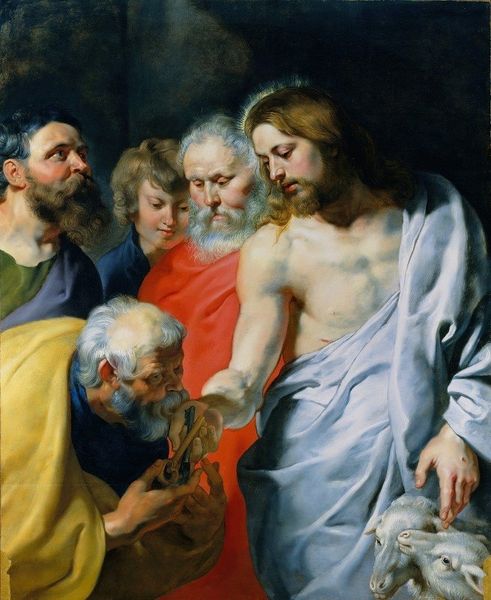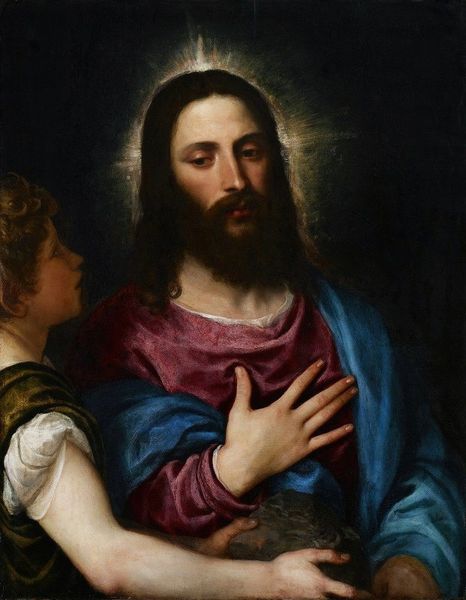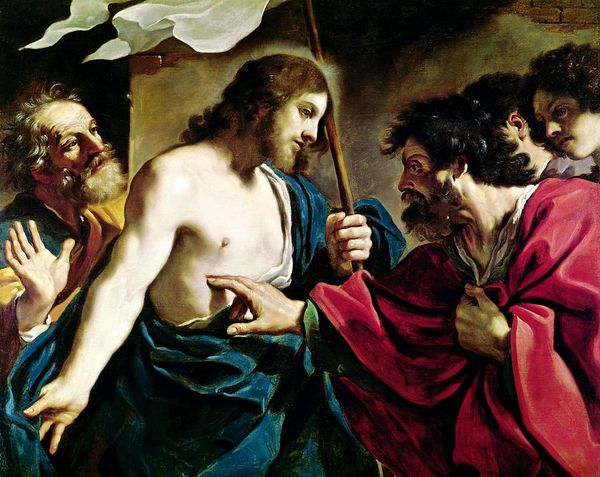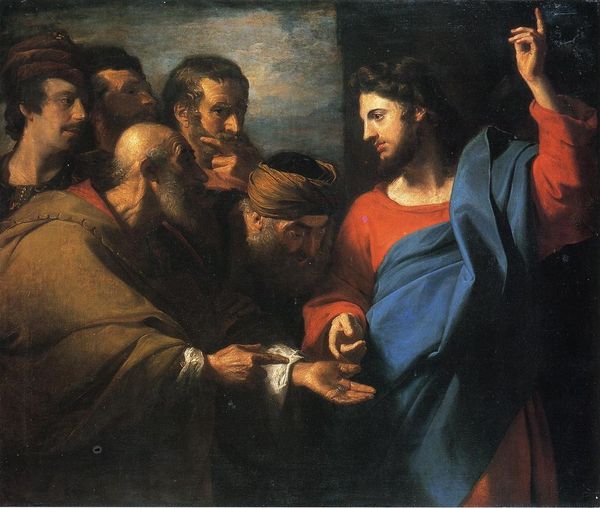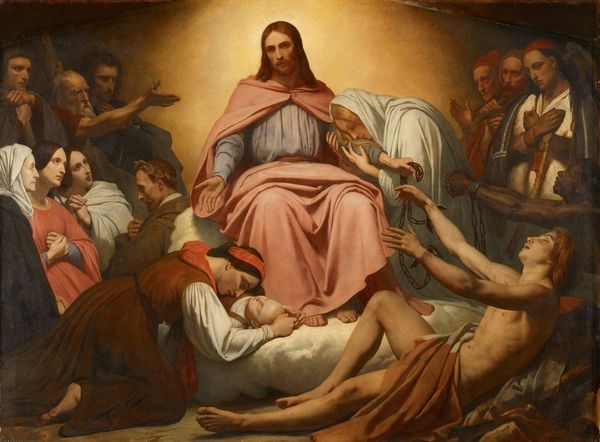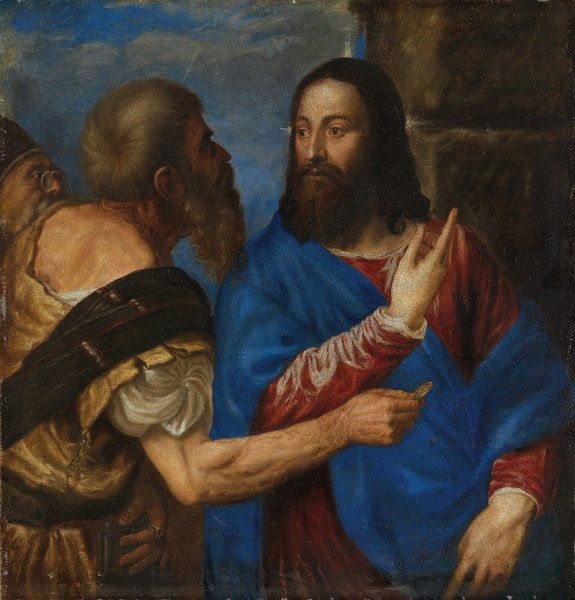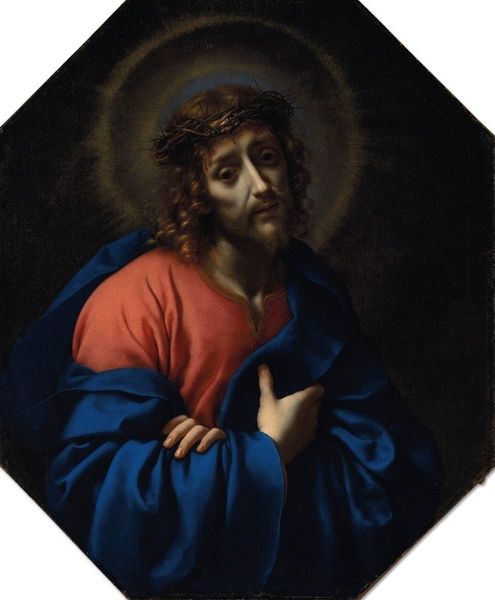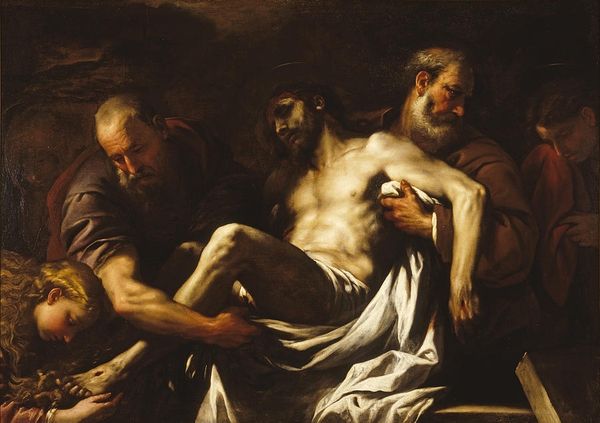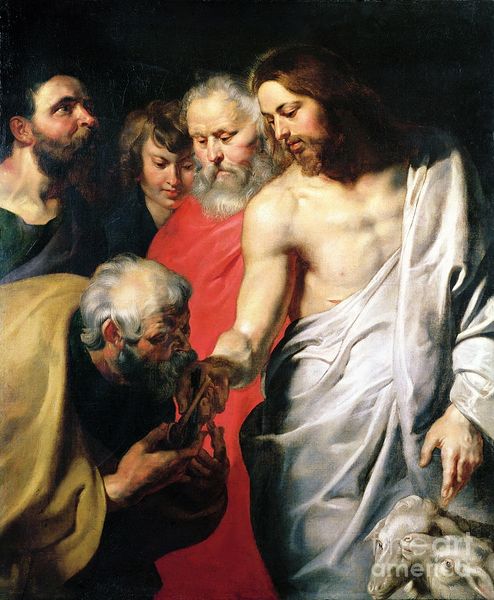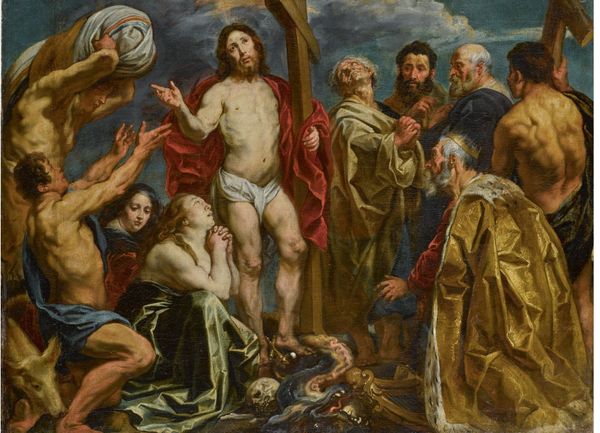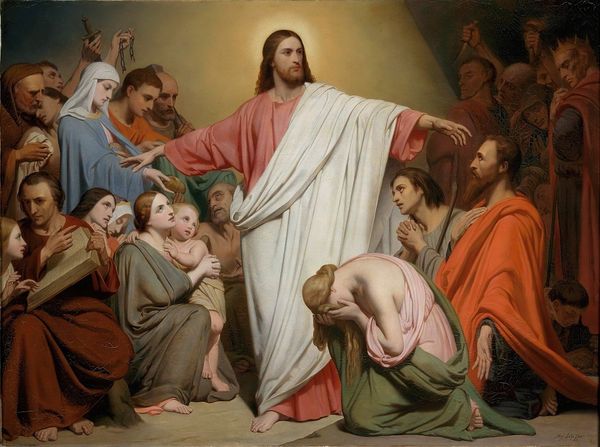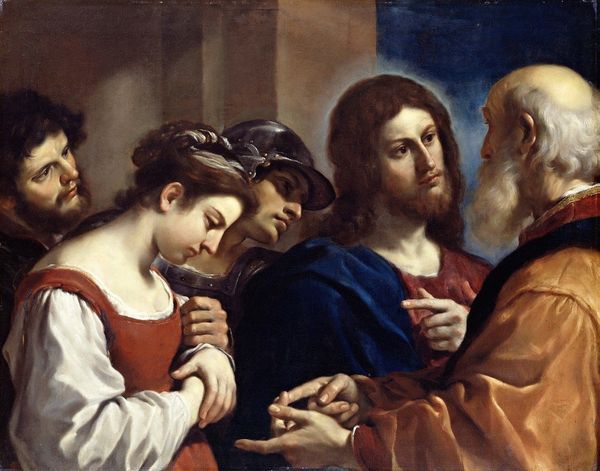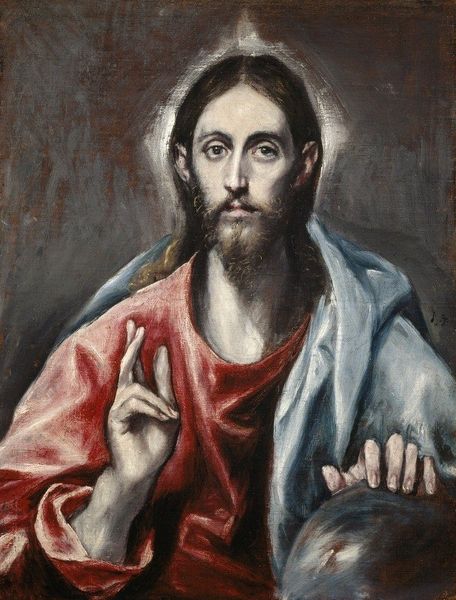
oil-paint
#
portrait
#
baroque
#
portrait
#
oil-paint
#
figuration
#
chiaroscuro
#
history-painting
Copyright: Public domain
Anthony van Dyck created 'Christ of the Coin' using oil paints on canvas, a popular medium during the Baroque era. Notice how the artist skillfully uses layers of thin paint, known as glazes, to create depth and luminosity in the figures' skin tones and drapery. Van Dyck's process involved building up the image gradually, starting with a sketch, then underpainting, and finally adding layers of color and detail. This was a laborious, time-consuming process, reflecting the value placed on skilled craftsmanship during this period. The use of oil paint allowed for rich colors and realistic textures, contributing to the painting's dramatic impact. The subject, Christ's encounter with the tax collectors, engages with the social context of the time by exploring themes of money, power, and morality. It is a commentary on the growing importance of capitalism. By understanding the materials and processes used in its creation, we can gain a deeper appreciation for the artistry and social significance of this work.
Comments
No comments
Be the first to comment and join the conversation on the ultimate creative platform.

